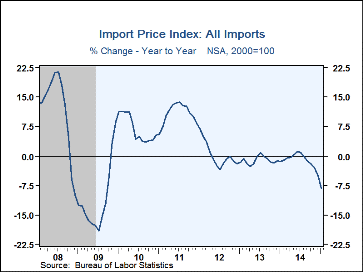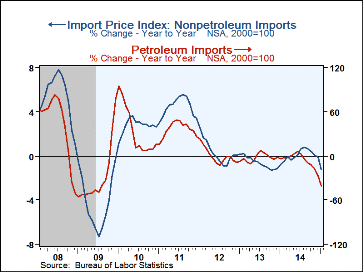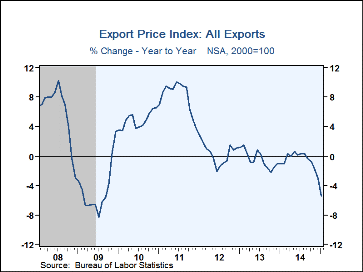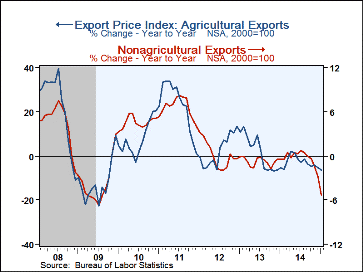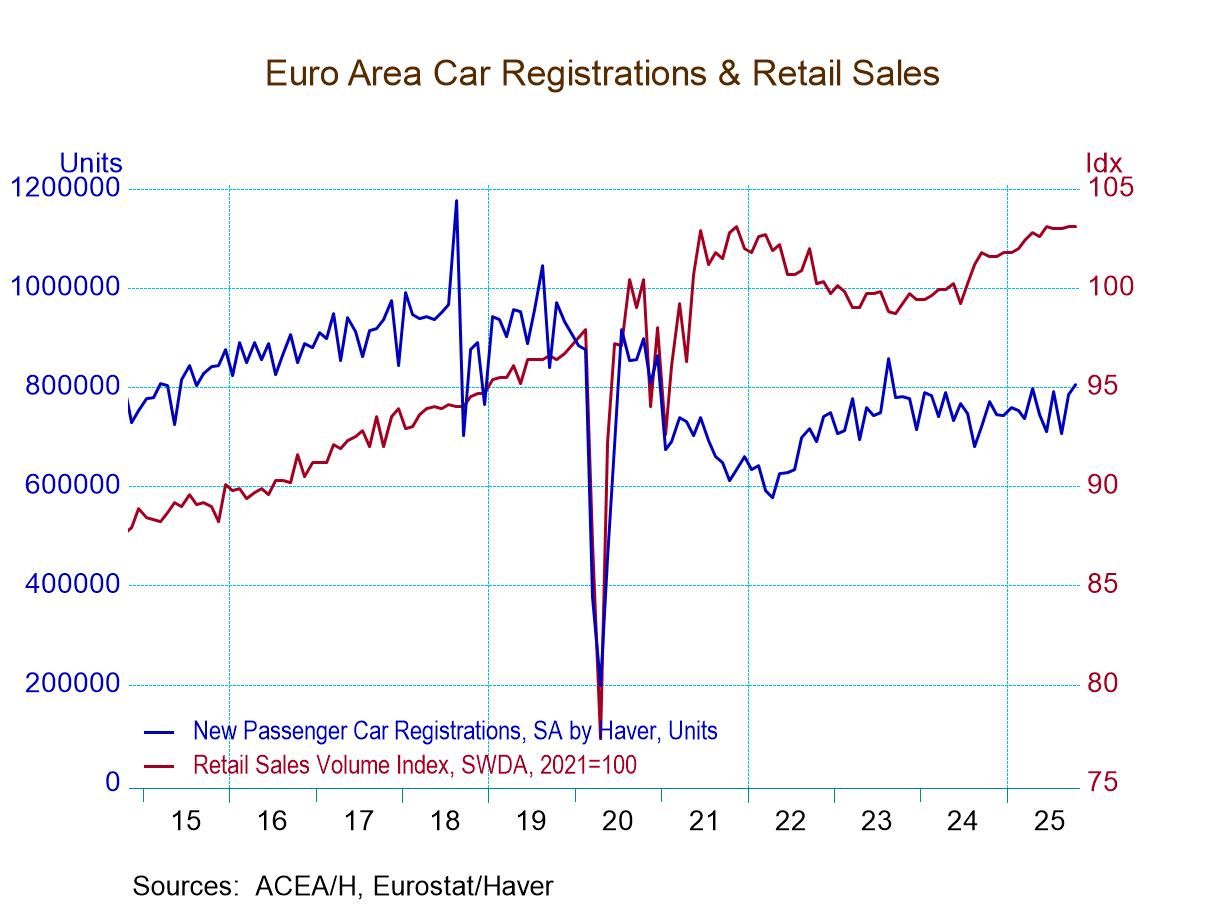 Global| Feb 13 2015
Global| Feb 13 2015U.S. Import and Export Price Declines Continue
by:Tom Moeller
|in:Economy in Brief
Summary
Downward pressure on prices of internationally traded goods is ongoing. Import prices declined 2.8% during January (-8.0% y/y) following a revised 1.9% December fall, earlier reported as -2.5%. It was the largest of seven straight [...]
Downward pressure on prices of internationally traded goods is ongoing. Import prices declined 2.8% during January (-8.0% y/y) following a revised 1.9% December fall, earlier reported as -2.5%. It was the largest of seven straight months of decline and compared to expectations for a 3.3% easing in the Action Economics Forecast Survey. A 17.7% fall (-40.1% y/y) in petroleum prices paced the decline in import costs. Nonoil prices followed suit with an accelerated 0.7% shortfall (-1.2% y/y). Monthly declines extend back to April.
Last month's weakness in nonoil import prices was led by a 2.2% decline (+0.7% y/y) in foods, feeds & beverages and a 1.6% fall (-4.1% y/y) in prices for nonoil industrial supplies. That was followed by a 0.5% drop (-1.1% y/y) in motor vehicles & parts, following three straight months of having been unchanged. Capital goods prices were off 0.4% (-1.0% y/y) and nonauto consumer goods prices declined 0.3% (-0.4% y/y). They've been down or unchanged for seven consecutive months.
Export prices fell 2.0% (-5.4% y/y), the sixth consecutive monthly drop. Nonagricultural prices fell 2.1% (-5.3% y/y), the largest of six straight monthly declines. Agricultural costs fell 1.2% (-6.3% y/y), down for the seventh month in the last eight.
A 5.7% drop (-14.7% y/y) in industrial supplies & materials prices paced last month's weakness. Petroleum prices fell 20.1% (-41.6% y/y) and foods, feeds & beverage prices were off 1.6% (-5.6% y/y). Prices excluding foods & fuels were off 0.4% (-1.0% y/y), the fifth straight down month. Nonauto consumer goods prices declined 0.8% (-1.4% y/y), the largest of five straight monthly shortfalls. Auto prices slipped 0.1% (+0.3% y/y) for a second straight month but capital goods prices improved 0.1% (0.8% y/y), for a second consecutive month.
The import and export price series can be found in Haver's USECON database. Detailed figures are available in the USINT database. The expectations figure from the Action Economics Forecast Survey is in the AS1REPNA database.
| Import/Export Prices (NSA, %) | Jan | Dec | Nov | Jan Y/Y | 2014 | 2013 | 2012 |
|---|---|---|---|---|---|---|---|
| Imports - All Commodities | -2.8 | -1.9 | -1.8 | -8.0 | -1.0 | -1.1 | 0.3 |
| Petroleum | -17.7 | -12.4 | -9.7 | -40.1 | -5.3 | -2.6 | -0.3 |
| Nonpetroleum | -0.7 | 0.0 | -0.3 | -1.2 | 0.1 | -0.6 | 0.3 |
| Exports - All Commodities | -2.0 | -1.0 | -0.9 | -5.4 | -0.5 | -0.4 | 0.4 |
| Agricultural | -1.2 | -0.7 | 0.1 | -6.3 | -2.7 | 1.6 | 2.4 |
| Nonagricultural | -2.1 | -1.0 | -1.0 | -5.3 | -0.3 | -0.7 | 0.1 |
Tom Moeller
AuthorMore in Author Profile »Prior to joining Haver Analytics in 2000, Mr. Moeller worked as the Economist at Chancellor Capital Management from 1985 to 1999. There, he developed comprehensive economic forecasts and interpreted economic data for equity and fixed income portfolio managers. Also at Chancellor, Mr. Moeller worked as an equity analyst and was responsible for researching and rating companies in the economically sensitive automobile and housing industries for investment in Chancellor’s equity portfolio. Prior to joining Chancellor, Mr. Moeller was an Economist at Citibank from 1979 to 1984. He also analyzed pricing behavior in the metals industry for the Council on Wage and Price Stability in Washington, D.C. In 1999, Mr. Moeller received the award for most accurate forecast from the Forecasters' Club of New York. From 1990 to 1992 he was President of the New York Association for Business Economists. Mr. Moeller earned an M.B.A. in Finance from Fordham University, where he graduated in 1987. He holds a Bachelor of Arts in Economics from George Washington University.


